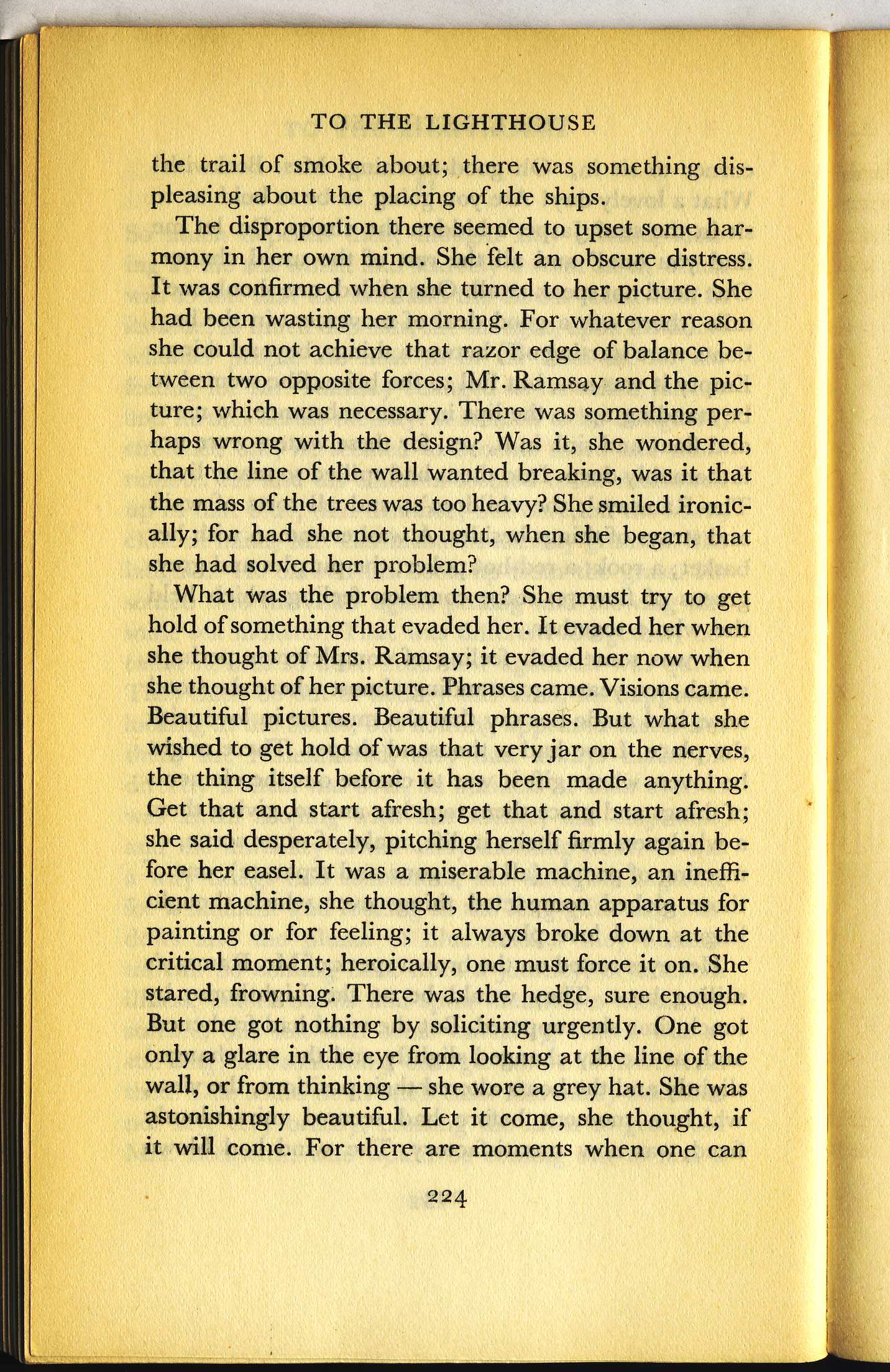
TO THE LIGHTHOUSEthe trail of smoke about; there was something dis-pleasing about the placing of the ships.The disproportion there seemed to upset some har-mony in her own mind. She felt an obscure distress.It was confirmed when she turned to her picture. Shehad been wasting her morning. For whatever reasonshe could not achieve that razor edge of balance be-tween two opposite forces; Mr. Ramsay and the pic-ture; which was necessary. There was something per-haps wrong with the design? Was it, she wondered,that the line of the wall wanted breaking, was it thatthe mass of the trees was too heavy? She smiled ironic-ally; for had she not thought, when she began, thatshe had solved her problem?What was the problem then? She must try to gethold of something that evaded her. It evaded her whenshe thought of Mrs. Ramsay; it evaded her now whenshe thought of her picture. Phrases came. Visions came.Beautiful pictures. Beautiful phrases. But what shewished to get hold of was that very jar on the nerves,the thing itself before it has been made anything.Get that and start afresh; get that and start afresh;she said desperately, pitching herself firmly again be-fore her easel. It was a miserable machine, an ineffi-cient machine, she thought, the human apparatus forpainting or for feeling; it always broke down at thecritical moment; heroically, one must force it on. Shestared, frowning. There was the hedge, sure enough.But one got nothing by soliciting urgently. One gotonly a glare in the eye from looking at the line of thewall, or from thinking — she wore a grey hat. She wasastonishingly beautiful. Let it come, she thought, ifit will come. For there are moments when one can224









